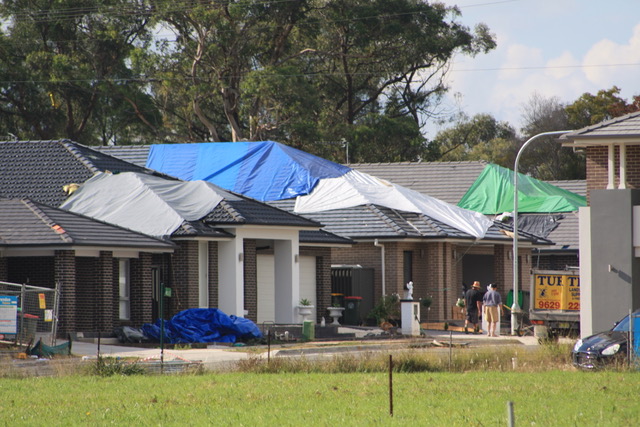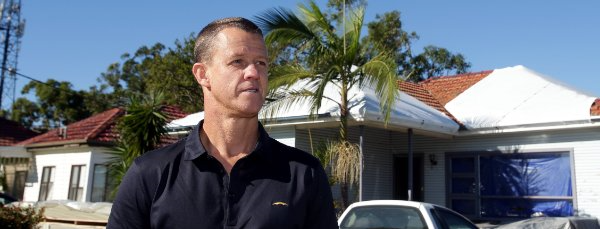This weekend marks three months since five fast-moving south-easterly storm cells converged on Sydney’s Western Suburbs, bringing tennis ball sized hail that broke apart tile roofs and left terrified homeowners exposed to torrential rain. As with many catastrophic weather events, the initial shocking deluge received media attention and was then lost in the 24-hours news cycle. What many people don’t realise though, is that the weeks following a major storm, cyclone or flood are only the start of an often drawn out, painful process for residents, its called the insurance claim life cycle.
With a lengthy insurance process being necessary before permanent roof repairs can commence, 90 days living under a tarp are filled with traumatising uncertainty. When will the next windy night tear the tarp away and leave the home open to the elements? How many more times will sleeping families be woken up at 3am to the sound of tarp strings lashing against the windows?
Yesterday, on the 90-day anniversary of the Kellyville super storm I visited the suburb to see for myself how the recovery was progressing. To my dismay I found hundreds of houses still waiting for repairs, being poorly protected by blue tarpaulins, sandbags and precarious arrangements of rope.
I canvassed residents in the area, walking door to door to talk to people about their experience since the February hail event. I heard the same story over and over again. The tarps kept blowing off, and during inclement weather, the home interior would then be once again receiving water damage. This would lead to more call-outs for builders to retarp properties. That would then mean the need for repeated damage evaluations which would have to be organised multiple times, causing more expense and necessitating time taken off from work for residents to meet with evaluators and liaise with insurance builders.
Unfortunately, the situation in Kellyville is nothing new. This cycle of poor protection from makeshift tarp setups being dislodged, causing further damage and delaying the start of permanent reconstruction work is something I’ve seen countless times in my work as a builder. It’s this situation that inspired me to develop Stormseal in the first place.
I couldn’t believe how many call outs I needed to send my guys on to replace tarps. Most houses during the post-storm 90 day period would require an average of five callouts, and some definitely needed more. If it was raining, you couldn’t leave these homes exposed and it was so frustrating to see the clock paused or in some cases turned back on processing times, delaying the point at which we could actually get in there and help affected residents reclaim the safety and security of their home.
Necessity really was the mother of invention for me in this case. I spent five years working with academic and industry experts to develop a durable product, strong enough to protect an exposed roof for up to a year until it’s permanently repaired. The resulting innovation is Stormseal, a patented polyurethane film that is conveniently heat shrinkwrapped hard and tight over a broken roof restoring weather integrity while occupants await permanent repairs.
The savings to insurers are huge and the savings to residents’ well being are even more significant. Replacing tarps with Stormseal means the community can get on with their lives, no longer living with the constant anxiety of an unstable roof. A stormseal installation is a one time job with no further call outs necessary and peace of mind provided for the householder. It also allows internal repairs to be carried out which you can only begin once the property is watertight.
We’re always going to have bad storms in Australia, but Stormseal is going to revolutionise how we respond to them. Now that we have this technology it’s time to change the way we protect people’s homes in the aftermath of natural disasters. The people of Kellyville shouldn’t still be living under tarps three months after their lives were turned upside down by the unpredictable force of nature. We need to utilise this Australian innovation to protect our communities. It’s time to make Australia more disaster resilient.







 Matthew Lennox
Matthew Lennox


